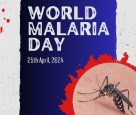
Findings that cell phone radiation causes cancer in rats do not apply to humans: Experts
Team Udayavani, Nov 4, 2018, 11:40 AM IST

Massachusetts: A recent US study claiming that radio-frequency radiation emitted by cell phones causes cancer in rats does not apply to humans, according to experts.
There is “clear evidence” that male rats exposed to high levels of radio frequency radiation (RFR) like that used in cell phones developed cancerous heart tumours, the study had concluded.
The USD 30 million study by the US National Toxicology Program (NTP) that took 10 years to complete also showed “some evidence” of tumours in the brain and adrenal gland of exposed male rats.
Following the report, some NGOs and scientists propose that the WHO’s Inter Agency for Research on Cancer (IARC) must upgrade the present Group 2B (possible human carcinogen) classification of RF radiation to Group1 (human carcinogen). But specialist agencies have asserted that the finding does not apply to humans.
The International Commission on Non Ionizing Radiation Protection (ICNIRP), the panel whose recommendations are followed by majority of nations and agencies such as the WHO, published a note categorically stating the study does not provide any actionable input to change the currently existing safety guidelines for RFR. It may be mentioned here that India’s safety guidelines for RFR are only 10 per cent of the ICNIRP values.
The US Federal Communication’s Commission, the standard setting body in this field follows the advice of the US Food and Drug Administration’s (FDA) Center for Devices and Radiological Health. FDA has strongly criticised the conclusions of the USNTP study and restated that the current safety guidelines are adequately safe and there is no need to revise them.
“For female rats, and male and female mice, the evidence was ‘equivocal’ as to whether cancers observed were associated with exposure to radio-frequency radiation,” a statement from the National Institute of Environmental Health Sciences said.
“We believe that the link between radio frequency radiation and tumours in male rats is real, and the external experts agreed,” senior NTP scientist John Bucher said. However, he conceded that one could not compare the exposures used in the studies directly with the exposure that humans experience when using a cell phone.
On the limitations of the study, he said, “In our studies, rats and mice received radio frequency radiation across their whole bodies. By contrast, people are mostly exposed in specific local tissues close to where they hold the phone. In addition, the exposure levels and durations in our studies were greater than what people experience.”
The NTP reports reveal how difficult and expensive it is to set up a system, which exposes the statistically needed number of rats/mice (3000 in several groups) to reproducible, accurate doses of RFR.
“We have relied on decades of research and hundreds of studies to have the most complete evaluation of radio frequency energy exposure. This information has given us the confidence that the current safety limits for cell phone radio frequency energy exposure remain acceptable for protecting the public health,” Jeffrey Shuren, director of Center for Devices and Radiological Health, asserted. The FDA’s mandate is to ensure that cell phones and any radiation emitting electronic product are safe for the public to use.
Shuren assured the public that “we only begin to observe effects to animal tissue at exposures that are 50 times higher than the current whole body safety limits set up by the Federal Communication Commission for radio frequency energy exposure”.
He referred to the unusual findings in the study: the rats exposed to whole body radio frequency energy lived longer than rats that were not exposed to any radiation (control group); only male rats exposed to the highest radiofrequency energy dosage developed a statistically significant number of heart schwannomas, which are very rare in humans, when compared to the control group in this experiment.
He disagreed with the NTP’s finding of clear evidence for heart schwannomas. There was a lack of a clear relationship between the doses of radiation administered to the animals and their subsequent tumour rate.
“The study was a huge fishing expedition that looked at many tissues and did not correct for multiple comparison issues. Consequently the results (increase in one rare tumour type in male but not female rats, and not in mice of either sex) may be statistical flukes,” Ken Foster, professor bioengineering at the University of Pennsylvania, told this writer.
He also felt that, as the exposures to the animals were very high, their body temperature increased, so there may have been some level of heat stress. “So if there is a real effect it may well be due to heating,” he cautioned. Will NTP study trigger a revision of IARC’s classification of RFR?
“I am skeptical that IARC would consider the totality of evidence changed sufficient to have another assessment by the working group.” he replied. “IARC classifications are based on a rigorous set of decision rules, but in practice they are interpreted by a group with its own biases so things are not as pure and free of politics as one might hope,” Foster said.
On September 4, the ICNIRP questioned the usefulness of the NTP studies, noting their inconsistencies and limitations. The studies did not provide a consistent, reliable and generalisable body of evidence for use as a basis for revising the current human exposure guidelines, it said. (K S Parthasarathy is a former secretary of Atomic Energy Regulatory Board)
Udayavani is now on Telegram. Click here to join our channel and stay updated with the latest news.
Top News
Related Articles More

World Malaria Day: WHO calls for equitable health access

What role does genetics play in breast cancer? How can genetic testing help with early breast cancer diagnosis?

Father’s diet can affect anxiety in sons, metabolism in daughters: Study in mice finds

Low back pain, depression, headaches main causes of poor health: Study

Surgical options for Parkinson’s disease
MUST WATCH
Latest Additions

NIA arrests key accused in 2023 attack on Indian High Commission in London

Three persons run over by train in Bengaluru

Indian nationals aboard ‘MSC Aries’ in good health, return delayed due to technicalities: MEA

Husband has no control over wife’s ‘stridhan’: SC

IT sleuths threatening raided leaders to claim money belongs to me, Cong: DK Shivakumar
























